David Von Dollen
Quantum-Enhanced Selection Operators for Evolutionary Algorithms
Jun 21, 2022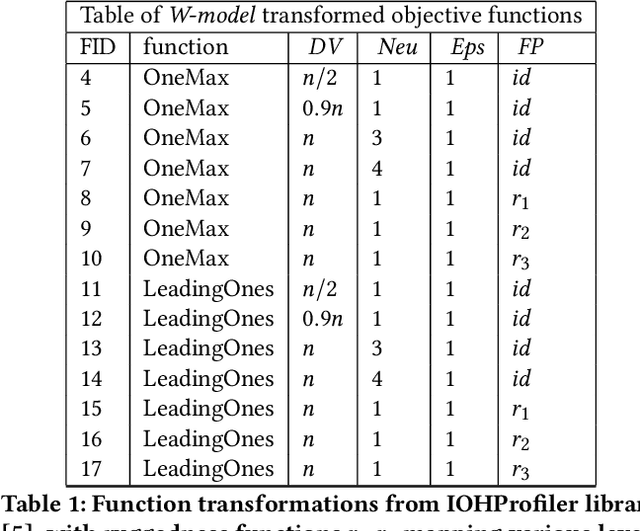
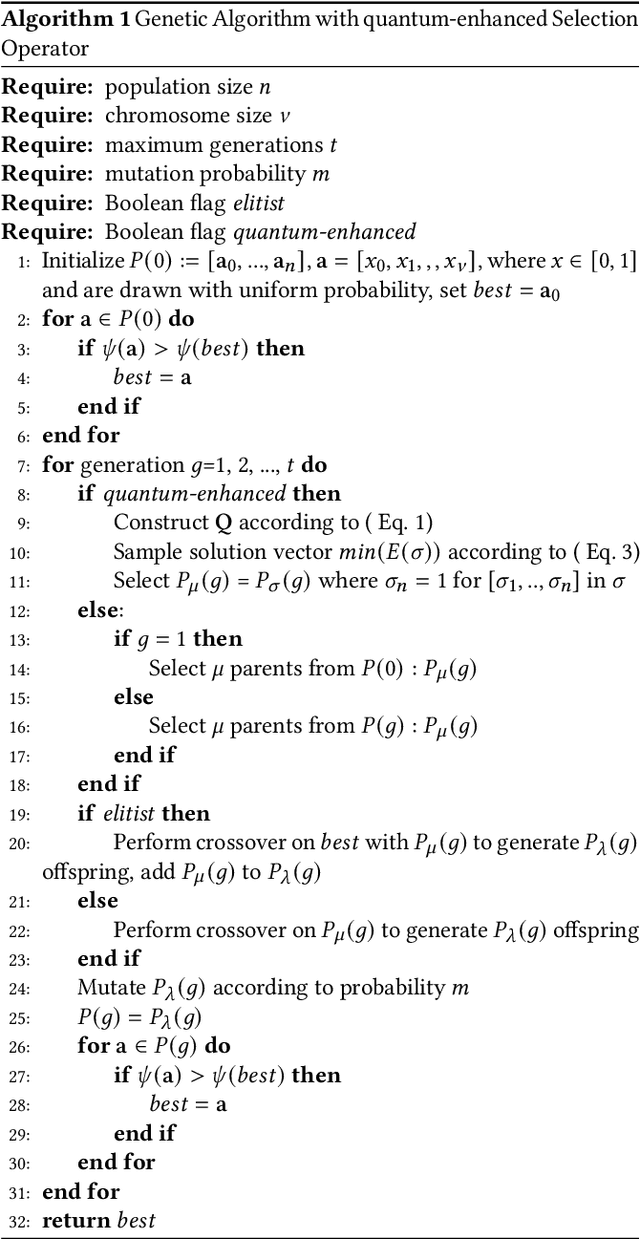
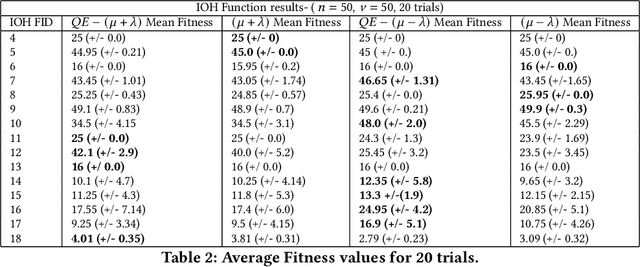

Abstract:Genetic algorithms have unique properties which are useful when applied to black box optimization. Using selection, crossover, and mutation operators, candidate solutions may be obtained without the need to calculate a gradient. In this work, we study results obtained from using quantum-enhanced operators within the selection mechanism of a genetic algorithm. Our approach frames the selection process as a minimization of a binary quadratic model with which we encode fitness and distance between members of a population, and we leverage a quantum annealing system to sample low energy solutions for the selection mechanism. We benchmark these quantum-enhanced algorithms against classical algorithms over various black-box objective functions, including the OneMax function, and functions from the IOHProfiler library for black-box optimization. We observe a performance gain in average number of generations to convergence for the quantum-enhanced elitist selection operator in comparison to classical on the OneMax function. We also find that the quantum-enhanced selection operator with non-elitist selection outperform benchmarks on functions with fitness perturbation from the IOHProfiler library. Additionally, we find that in the case of elitist selection, the quantum-enhanced operators outperform classical benchmarks on functions with varying degrees of dummy variables and neutrality.
Hyperparameter optimization of hybrid quantum neural networks for car classification
May 10, 2022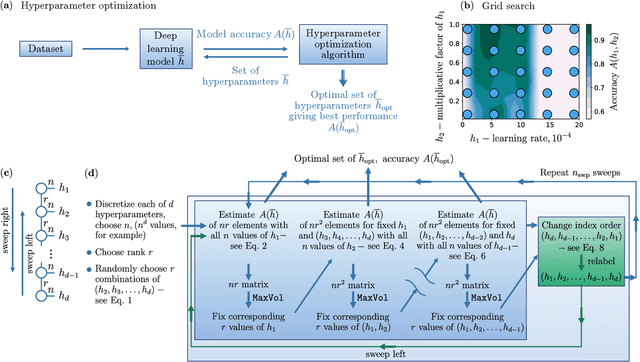

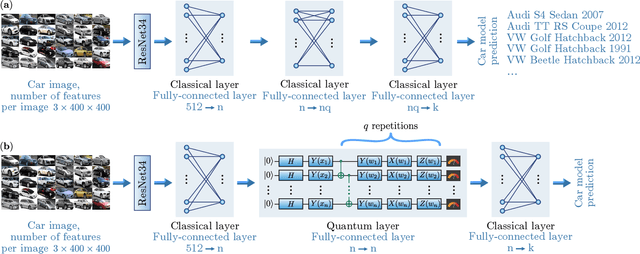

Abstract:Image recognition is one of the primary applications of machine learning algorithms. Nevertheless, machine learning models used in modern image recognition systems consist of millions of parameters that usually require significant computational time to be adjusted. Moreover, adjustment of model hyperparameters leads to additional overhead. Because of this, new developments in machine learning models and hyperparameter optimization techniques are required. This paper presents a quantum-inspired hyperparameter optimization technique and a hybrid quantum-classical machine learning model for supervised learning. We benchmark our hyperparameter optimization method over standard black-box objective functions and observe performance improvements in the form of reduced expected run times and fitness in response to the growth in the size of the search space. We test our approaches in a car image classification task, and demonstrate a full-scale implementation of the hybrid quantum neural network model with the tensor train hyperparameter optimization. Our tests show a qualitative and quantitative advantage over the corresponding standard classical tabular grid search approach used with a deep neural network ResNet34. A classification accuracy of 0.97 was obtained by the hybrid model after 18 iterations, whereas the classical model achieved an accuracy of 0.92 after 75 iterations.
Quantum-Assisted Feature Selection for Vehicle Price Prediction Modeling
Apr 08, 2021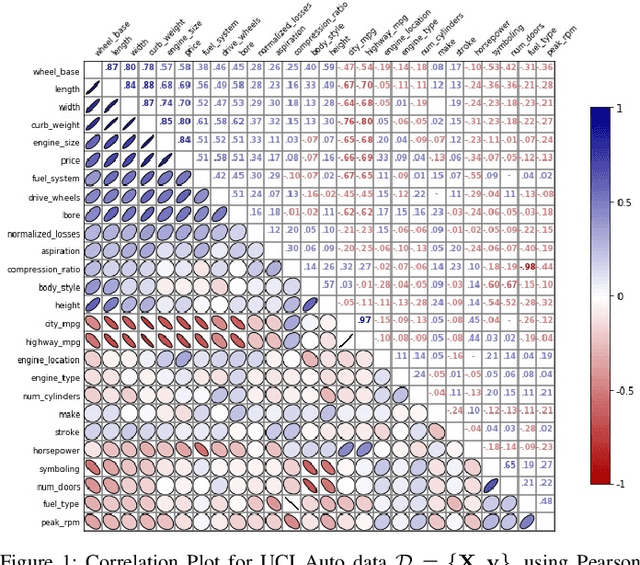
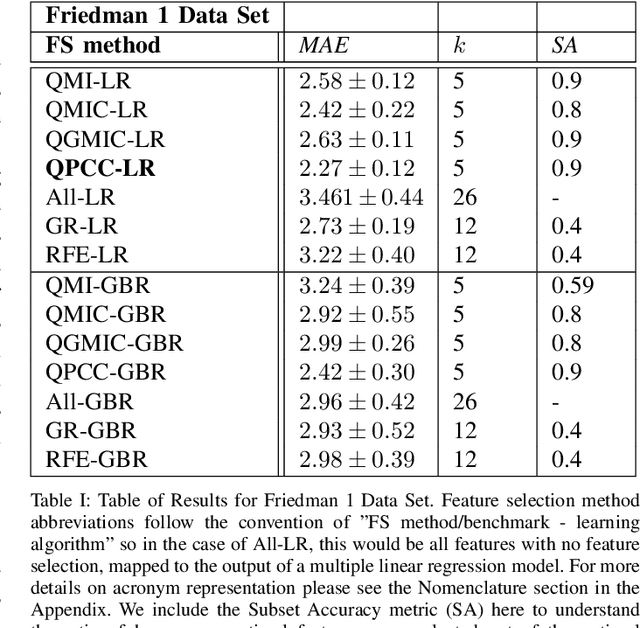
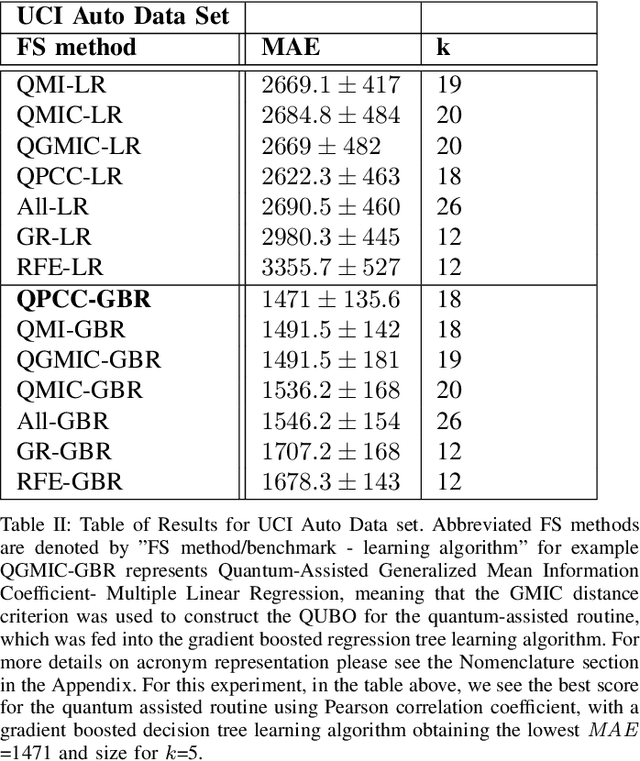
Abstract:Within machine learning model evaluation regimes, feature selection is a technique to reduce model complexity and improve model performance in regards to generalization, model fit, and accuracy of prediction. However, the search over the space of features to find the subset of $k$ optimal features is a known NP-Hard problem. In this work, we study metrics for encoding the combinatorial search as a binary quadratic model, such as Generalized Mean Information Coefficient and Pearson Correlation Coefficient in application to the underlying regression problem of price prediction. We investigate trade-offs in the form of run-times and model performance, of leveraging quantum-assisted vs. classical subroutines for the combinatorial search, using minimum redundancy maximal relevancy as the heuristic for our approach. We achieve accuracy scores of 0.9 (in the range of [0,1]) for finding optimal subsets on synthetic data using a new metric that we define. We test and cross-validate predictive models on a real-world problem of price prediction, and show a performance improvement of mean absolute error scores for our quantum-assisted method $(1471.02 \pm{135.6})$, vs. similar methodologies such as recursive feature elimination $(1678.3 \pm{143.7})$. Our findings show that by leveraging quantum-assisted routines we find solutions that increase the quality of predictive model output while reducing the input dimensionality to the learning algorithm on synthetic and real-world data.
TensorFlow Quantum: A Software Framework for Quantum Machine Learning
Mar 06, 2020


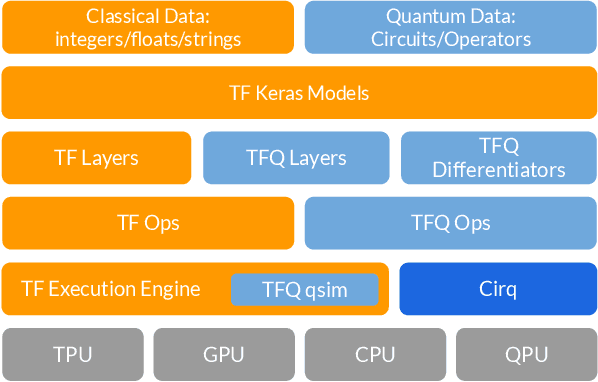
Abstract:We introduce TensorFlow Quantum (TFQ), an open source library for the rapid prototyping of hybrid quantum-classical models for classical or quantum data. This framework offers high-level abstractions for the design and training of both discriminative and generative quantum models under TensorFlow and supports high-performance quantum circuit simulators. We provide an overview of the software architecture and building blocks through several examples and review the theory of hybrid quantum-classical neural networks. We illustrate TFQ functionalities via several basic applications including supervised learning for quantum classification, quantum control, and quantum approximate optimization. Moreover, we demonstrate how one can apply TFQ to tackle advanced quantum learning tasks including meta-learning, Hamiltonian learning, and sampling thermal states. We hope this framework provides the necessary tools for the quantum computing and machine learning research communities to explore models of both natural and artificial quantum systems, and ultimately discover new quantum algorithms which could potentially yield a quantum advantage.
Investigating Reinforcement Learning Agents for Continuous State Space Environments
Aug 28, 2017



Abstract:Given an environment with continuous state spaces and discrete actions, we investigate using a Double Deep Q-learning Reinforcement Agent to find optimal policies using the LunarLander-v2 OpenAI gym environment.
Identifying Similarities in Epileptic Patients for Drug Resistance Prediction
Apr 26, 2017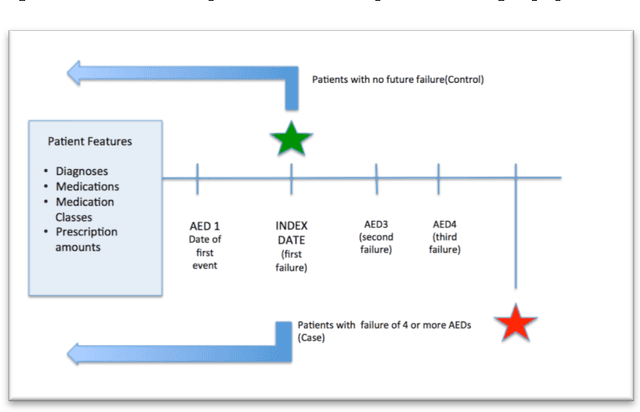
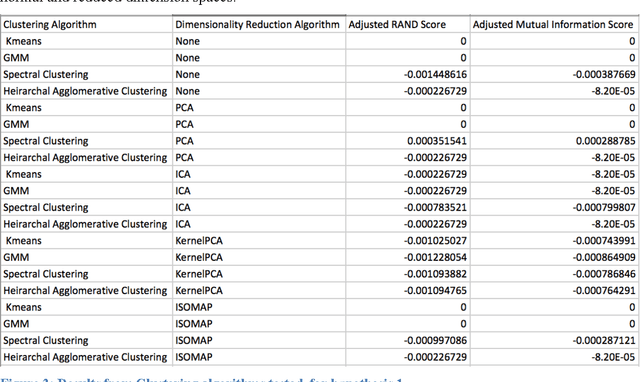
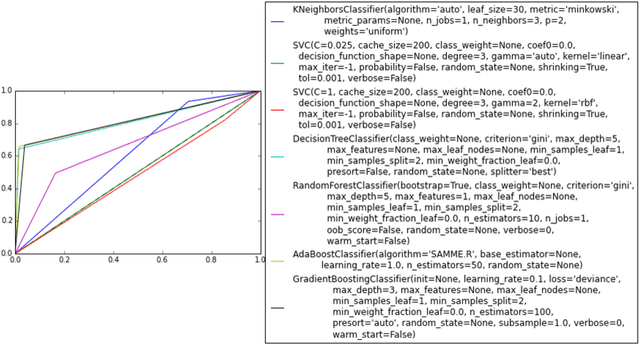

Abstract:Currently, approximately 30% of epileptic patients treated with antiepileptic drugs (AEDs) remain resistant to treatment (known as refractory patients). This project seeks to understand the underlying similarities in refractory patients vs. other epileptic patients, identify features contributing to drug resistance across underlying phenotypes for refractory patients, and develop predictive models for drug resistance in epileptic patients. In this study, epileptic patient data was examined to attempt to observe discernable similarities or differences in refractory patients (case) and other non-refractory patients (control) to map underlying mechanisms in causality. For the first part of the study, unsupervised algorithms such as Kmeans, Spectral Clustering, and Gaussian Mixture Models were used to examine patient features projected into a lower dimensional space. Results from this study showed a high degree of non-linearity in the underlying feature space. For the second part of this study, classification algorithms such as Logistic Regression, Gradient Boosted Decision Trees, and SVMs, were tested on the reduced-dimensionality features, with accuracy results of 0.83(+/-0.3) testing using 7 fold cross validation. Observations of test results indicate using a radial basis function kernel PCA to reduce features ingested by a Gradient Boosted Decision Tree Ensemble lead to gains in improved accuracy in mapping a binary decision to highly non-linear features collected from epileptic patients.
 Add to Chrome
Add to Chrome Add to Firefox
Add to Firefox Add to Edge
Add to Edge